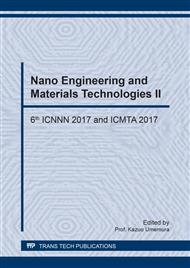p.170
p.179
p.184
p.190
p.195
p.200
p.207
p.212
p.217
Content of Aluminium Hydroxide in Lime-Silica Composite and its Influence on Tobermorite Formation
Abstract:
Aerated concrete is lightweight building material with excellent thermos-technical properties compared to its strengths, easy workability and economic efficiency. It is material with long tradition of manufacturing since 1924 but its potential is yet possible to be extended. Since the beginning pure ingredients such as lime and silica sand has been used. Nowadays we are looking for ways to replace these expensive raw materials with cheaper alternatives. One of the most important mechanical properties of each material is its strength. In case of aerated concrete the bearer of strength is mineral tobermorite. It is created by reaction of silicon oxides and lime at hydrothermal conditions. It belongs to the group of calcium hydrosilicates with chemical formula Ca5Si6O16(OH)2·4H2O. Main goal of this paper is proposal for modification of the raw materials composition and autoclave regime of aerated concrete using aluminium hydroxide in order to improve final mechanical properties and mineralogical composition.
Info:
Periodical:
Pages:
195-199
Citation:
Online since:
March 2018
Authors:
Price:
Сopyright:
© 2018 Trans Tech Publications Ltd. All Rights Reserved
Share:
Citation:


